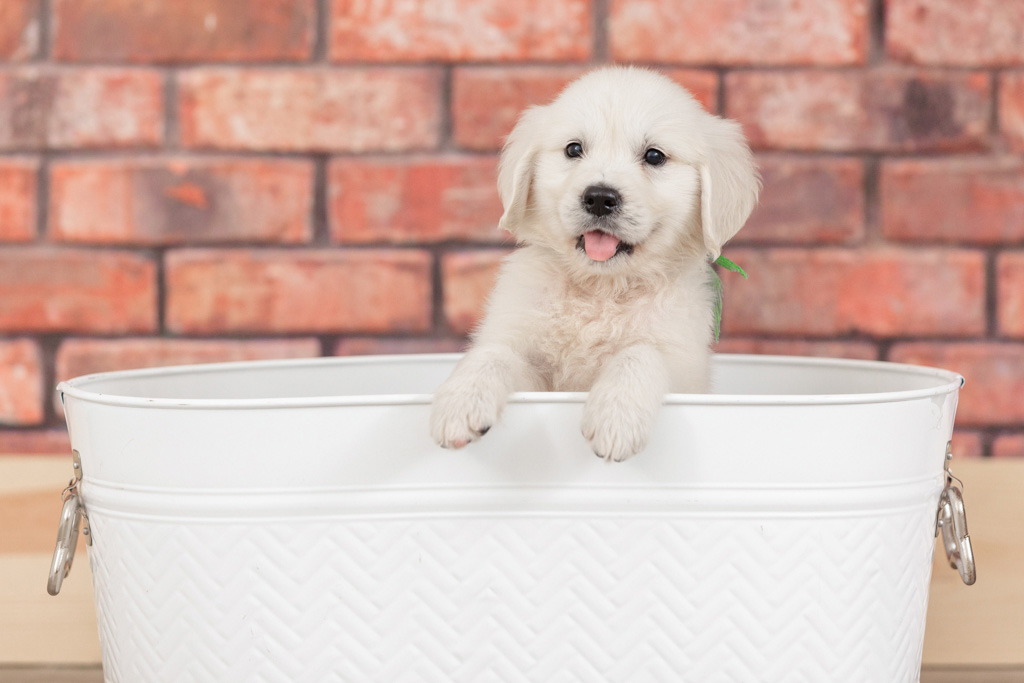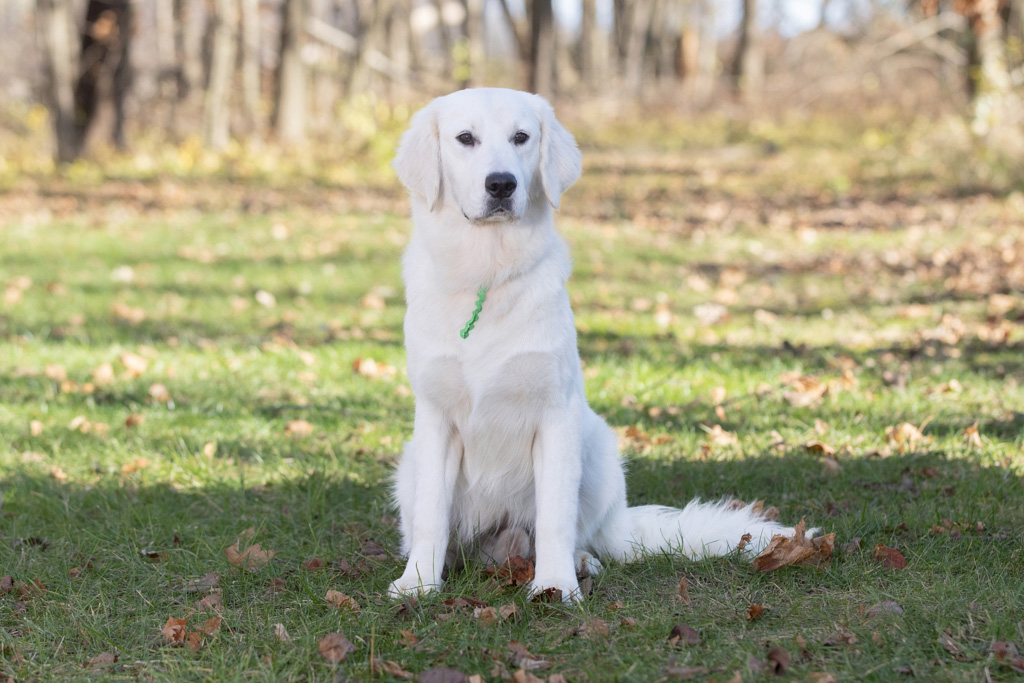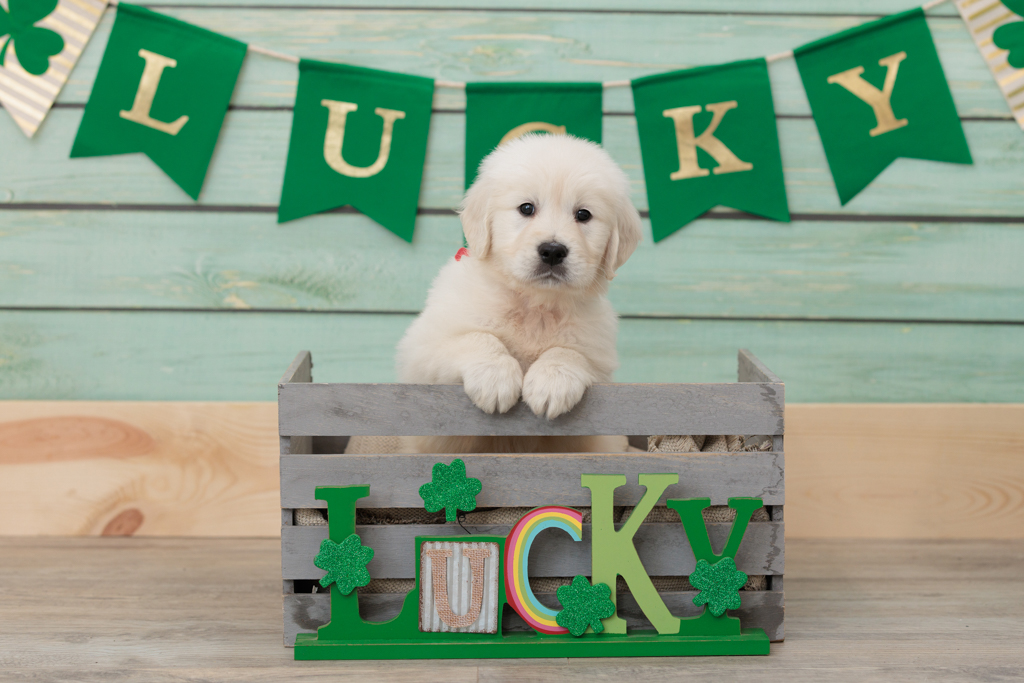Bringing home an English Cream Golden Retriever puppy is an exciting event. But knowing the right time to do so is crucial.
The ideal age for your English Cream Golden puppy to go home is not just a date on a calendar. It’s a pivotal moment in your puppy’s development.
Between 8-12 weeks, puppies experience significant growth stages. They learn essential behaviors from their mother and littermates. This period is also a critical socialization window for your puppy.
However, this time also overlaps with the puppy’s fear period, making it a sensitive time for moving to a new home.
Understanding puppy growth stages can help ensure a smooth transition and set the stage for a well-adjusted adult dog.
In this guide, we’ll explore the ideal age for your English Cream Golden puppy to go home, the importance of timing, and how to prepare for your puppy’s arrival.
Understanding the Developmental Stages of English Cream Golden Retrievers
The first few weeks of a puppy’s life are filled with remarkable changes. Recognizing these developmental stages can guide you in caring for your English Cream Golden Retriever. Each period lays the groundwork for future behaviors and health.
Throughout their early life, puppies are heavily influenced by their environment and interactions. These stages include:
- Neonatal Period (Newborn to 3 Weeks)
- Socialization Period (3 to 8 Weeks)
- Go Home Window (8 to 12 Weeks)
Each phase plays a critical role in shaping your puppy’s personality and adaptability. Proper care during these times ensures a balanced and confident adult dog.
Newborn to 3 Weeks: The Neonatal Period
During the neonatal period, English Cream puppies rely completely on their mother. They gain nourishment and warmth from her while learning fundamental canine behaviors.
Their main activities include nursing and sleeping, which are vital for growth. At this stage, they begin to develop basic reflexes and sensory functions.
3 to 8 Weeks: The Socialization Period
Puppies enter the socialization period from 3 to 8 weeks. They start interacting more with their littermates and environment.
This period is crucial for learning bite inhibition and communication. Puppies observe and mimic behaviors essential for future dog interactions.
Playtime becomes a pivotal learning moment. Puppies gain confidence and learn limits through playful tussles and social cues. During these weeks, they become more aware of their surroundings.
8 to 12 Weeks: The Ideal Go Home Window
The 8 to 12 weeks of age mark is pivotal for English Cream puppies. This is the phase when they are best prepared to transition to their new homes.
Puppies are now ready to meet new people and experience different environments. However, this period also includes the fear period. Care must be taken to ensure new experiences are positive.
Owners should provide plenty of socialization opportunities. This can lead to a well-adjusted adult dog. Making this transition smooth sets the foundation for a happy and confident pet.
The Significance of 8-12 Weeks for English Cream Puppies
The 8 to 12-week window is a critical developmental stage. It shapes the life of an English Golden Retriever. This period is essential for puppies leaving the familiarity of their litter. It marks the beginning of their social lives.
Proper timing ensures the puppy adjusts well to new surroundings. This phase enables them to meet other people and pets. Socialization during this time can help them grow into well-rounded adult dogs.
Veterinarians advocate for puppies to remain with their mother until at least eight weeks. This helps them receive proper healthcare and early life lessons. Early weaning can lead to behavioral challenges.
Ensuring a loving and structured environment during these weeks minimizes stress. It also takes advantage of the socialization opportunities available at this time.
Learning from Mother and Littermates
The mother and littermates are the first teachers of puppies. They provide essential lessons in canine etiquette and communication.
Puppies learn critical life skills like bite inhibition and play boundaries. These interactions lay a foundation for future relationships. Such lessons reduce the risk of anxiety and aggression.
The Fear Period and Its Impact
The fear period occurs between 8 and 10 weeks of a puppy’s life. It’s a sensitive time during which puppies become wary of new experiences.
During this phase, careful introduction to new stimuli is necessary. This ensures they associate new things with positive experiences. Meeting a variety of people and exploring different environments build confidence. Dog owners should plan activities that familiarize their puppy with larger dogs and other breeds of dogs.
Providing a nurturing and safe environment during this time helps mitigate potential fear responses. It allows puppies to grow into happy and resilient adult dogs.
Preparing for Your English Cream Golden Puppy’s Arrival
Bringing home an English Cream Golden Retriever puppy is a thrilling experience. Preparation is key to ensuring a smooth transition. Start by creating a checklist of essentials for your new family member.
Your list might include:
- A comfortable bed
- Puppy-proofing supplies
- High-quality puppy food
- Food and water bowls
- Age-appropriate toys for stimulation
Having these items ready makes the transition easier for both you and your puppy. It also eases their adjustment to your home.
Plan ahead for the first few days, focusing on routine and familiarity. This helps your puppy settle in and feel secure. Puppies thrive on consistency.
Home Environment Setup
When setting up your home, ensure your puppy has a designated safe space. This area provides comfort and security as the puppy acclimates.
Make sure to puppy-proof the space. Remove potential hazards such as electric cords and small objects. Creating a safe environment prevents accidents and encourages exploration.
Transitioning Your Puppy to Their New Home
The transition to a new home is a pivotal time for your English Cream Golden Retriever puppy. They are leaving behind their mother and littermates and entering an unfamiliar environment. To ease this transition, maintain a calm and welcoming atmosphere.
Consistency in daily routines helps your puppy adapt faster. Establish regular feeding and potty schedules. These routines provide a sense of stability and security. Introduce your puppy to different rooms and gradually expand its access as it grows comfortable.
Patience and understanding go a long way. Remember that each puppy adjusts at their own pace. Offer gentle encouragement and plenty of affection to help them settle in.
Go Home Day: Making It Smooth
On go-home day, keep things calm and low-key. Avoid overwhelming your puppy with too many visitors or activities. Allow them time to explore their new space at their own pace.
Offer comfort by staying close and speaking softly. Your presence is reassuring, helping your puppy feel secure in their new environment.
Choosing a reputable breeder of English Cream Golden Retrievers can help the process. They’ll have identified any health issues and ensured they get daily exercise and playtime to aid in socialization.
The First Few Weeks at Home
During these weeks, focus on bonding with your puppy. Spend quality time playing and interacting with them. This helps build trust and strengthens your relationship.
Introduce your puppy to basic commands with positive reinforcement. Consistent training lays the foundation for good behavior as your puppy grows into an adult dog.
Long-Term Considerations for English Cream Golden Retriever Owners
Owning an English Cream Golden Retriever is a long-term commitment. As your puppy matures into adulthood, their needs will evolve. Understanding these changes helps ensure your dog’s happiness and well-being.
Socialization shouldn’t stop after puppyhood. Continuously exposing your dog to new experiences keeps them confident and sociable, and this ongoing effort helps maintain their calm temperament.
Regular veterinary check-ups are crucial for monitoring your health as your dog ages. Following a comprehensive wellness plan supports a long and healthy life.
Training and Socialization Beyond the Puppy Years
Training should continue throughout your dog’s life. Refresher courses in obedience can keep skills sharp. Engaging in activities like agility or therapy work can also be beneficial.
These activities not only provide mental stimulation but also strengthen your bond with your English Cream Golden Retriever.
Embracing the Journey with Your English Cream Retriever
Welcoming an English Cream Golden Retriever into your life is a rewarding experience. Understanding their developmental needs and providing a nurturing environment sets the foundation for a strong bond.
As you navigate this journey, remember the joy and companionship your dog brings. With care and commitment, your English Cream Retriever will thrive and become a cherished family member for years to come.



